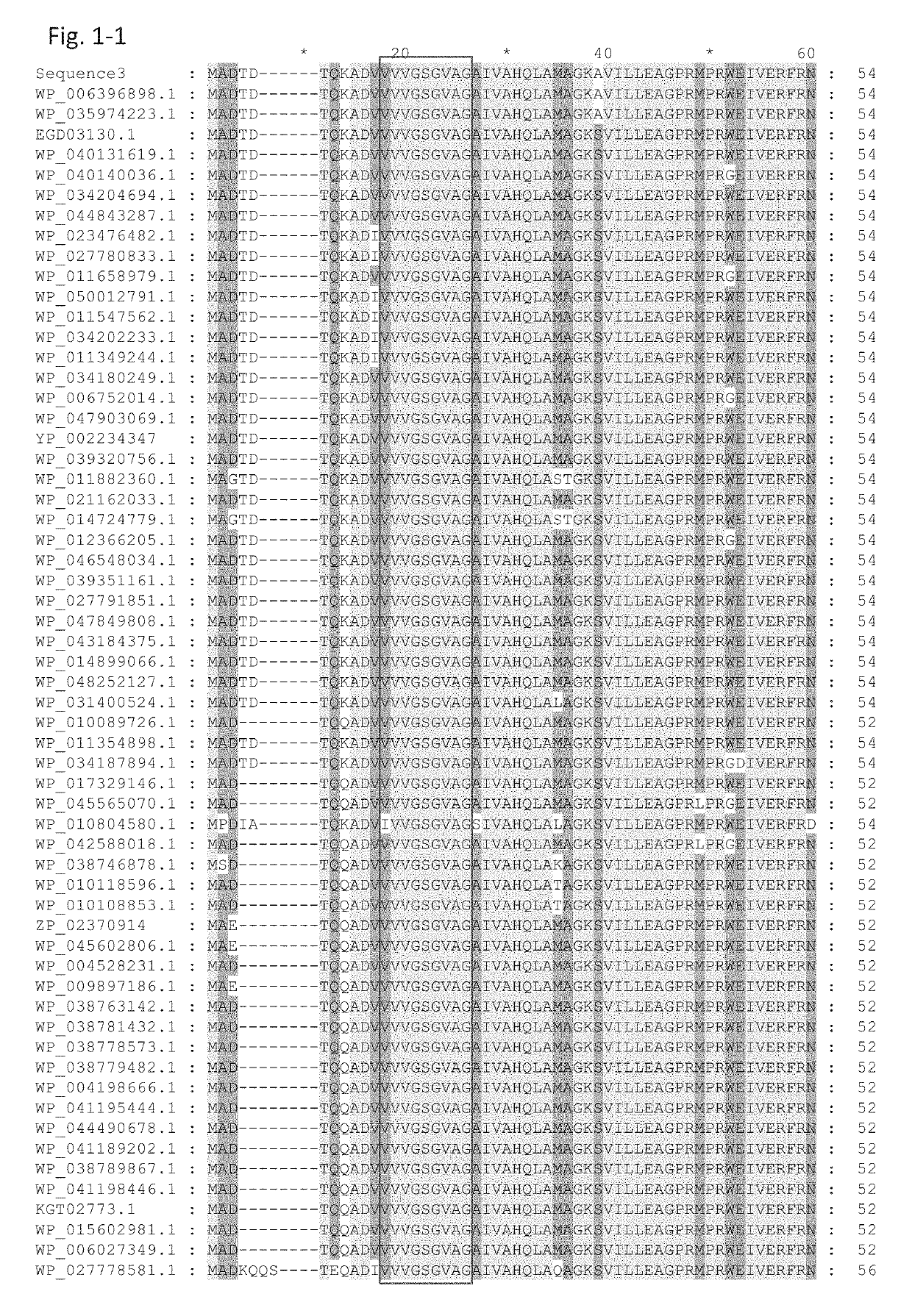Mutant-type glucose dehydrogenase and use thereof
a glucose dehydrogenase, mutant-type technology, applied in the field of gdh, can solve the problems of low reactivity, inability to accurately measure the blood glucose level, and cygdh and pqqgdh-types, and achieve the effect of improving the specificity of glucos
- Summary
- Abstract
- Description
- Claims
- Application Information
AI Technical Summary
Benefits of technology
Problems solved by technology
Method used
Image
Examples
example 1
Construction of Plasmid which Expresses Burkholderia cepacia GDH
[0289]As a plasmid which expresses a Burkholderia cepacia GDH, a plasmid which expresses a GDH α-subunit and a γ-subunit was provided.
[0290]As the plasmid which expresses an α-subunit and a γ-subunit, a plasmid described in WO 02 / 036779 (which corresponds to EP 1331272 A), pTrc99A / γ+α was used. This plasmid is a plasmid prepared by inserting a DNA fragment consecutively containing a γ-subunit structural gene and an α-subunit structural gene of the GDH of the Burkholderia cepacia KS1 strain into the cloning site NcoI / HindIII of the pTrc99A vector. The GDHγα gene in this plasmid is regulated by the trc promoter. The pTrc99A / γ+α has an ampicillin resistance gene.
[0291]Using the plasmid pTrc99A / γ+α as a template, and oligonucleotides having the following sequences as primers, PCR was carried out to amplify the whole plasmid including a DNA fragment encoding six histidine residues added to the C-terminus of the GDH α-subunit...
example 2
Introduction of Mutations to GDH α-Subunit Gene
[0294]The GDH α-subunit gene contained in pTrc99A / γ+α, which was obtained in Example 1, was subjected to site-directed mutagenesis such that a mutation(s) was introduced to an amino acid(s) of the α-subunit encoded by the gene. More specifically, using a commercially available site-directed mutagenesis kit (QuikChange II Site-Directed Mutagenesis Kit, Stratagene), codon modification of the GDH α-subunit gene contained in the pTrc99A / γ+α plasmid described in Example 1 was carried out such that an amino acid(s), for example, the glycine at position 322, the histidine at position 363, and / or the asparagine at position 474, was / were substituted with another / other amino acid(s).
[0295]Table 1 shows the mutants constructed. In each notation representing a mutation, the number represents the position in the amino acid sequence; the alphabet before the number represents the amino acid residue before the amino acid substitution, and the alphabet ...
example 3
Analysis of Substrate Specificities of Mutant GDHs
[0296]Using the mutant GDH-expressing plasmids obtained in Example 2, mutant-type GDHs were produced, and their substrate specificities were studied.
(1) Culture
[0297]Each mutant-type GDH-expressing plasmid was introduced into the Escherichia coli BL21 strain, and the resulting bacterial cells were cultured in 3 mL of LB medium (supplemented with 100 μg / mL carbenicillin) using an L-shaped tube at 37° C. for 4 hours, and then at 25° C. for additional 20 hours.
(2) Preparation of Crude Enzyme Sample
[0298]Bacterial cells were collected from the culture liquid obtained by the culture, and suspended in 400 μL of BugBuster (manufactured by Merck Millipore). The resulting suspension was subjected to high-speed shaking at room temperature for 20 minutes to homogenize the bacterial cells. The suspension was centrifuged (15,000×g, 20 minutes, 4° C.), and the resulting residue was removed. The supernatant (water-soluble fraction) obtained was pro...
PUM
| Property | Measurement | Unit |
|---|---|---|
| reactivity | aaaaa | aaaaa |
| width | aaaaa | aaaaa |
| length | aaaaa | aaaaa |
Abstract
Description
Claims
Application Information
 Login to View More
Login to View More - R&D
- Intellectual Property
- Life Sciences
- Materials
- Tech Scout
- Unparalleled Data Quality
- Higher Quality Content
- 60% Fewer Hallucinations
Browse by: Latest US Patents, China's latest patents, Technical Efficacy Thesaurus, Application Domain, Technology Topic, Popular Technical Reports.
© 2025 PatSnap. All rights reserved.Legal|Privacy policy|Modern Slavery Act Transparency Statement|Sitemap|About US| Contact US: help@patsnap.com



